Wireless Microphones Guide
Wireless technology
Look for wireless microphones that utilize advanced technologies like frequency hopping spread spectrum (FHSS) or digital transmission to ensure a reliable connection and minimize interference. One excellent example of this is the Shure BLX288/PG58 Dual Channel Handheld Wireless Microphone System, which operates on the frequency hopping spread spectrum technology, allowing it to automatically select the best available frequency for smooth and interference-free performance.
Another important aspect to consider is the range of the wireless microphone. Look for products that have a considerable operating range, such as the Sennheiser EW 112P G4 Portable Lavalier Wireless System, which has a range of up to 330 feet. This gives you the flexibility to move around on stage or in larger venues without losing signal quality. In addition, pay attention to the microphone's battery life and consider options like the Audio-Technica System 10 ATW-1102 Wireless Handheld Microphone System, which offers up to 12 hours of continuous use, ensuring uninterrupted performance during rehearsals, presentations, or live events.
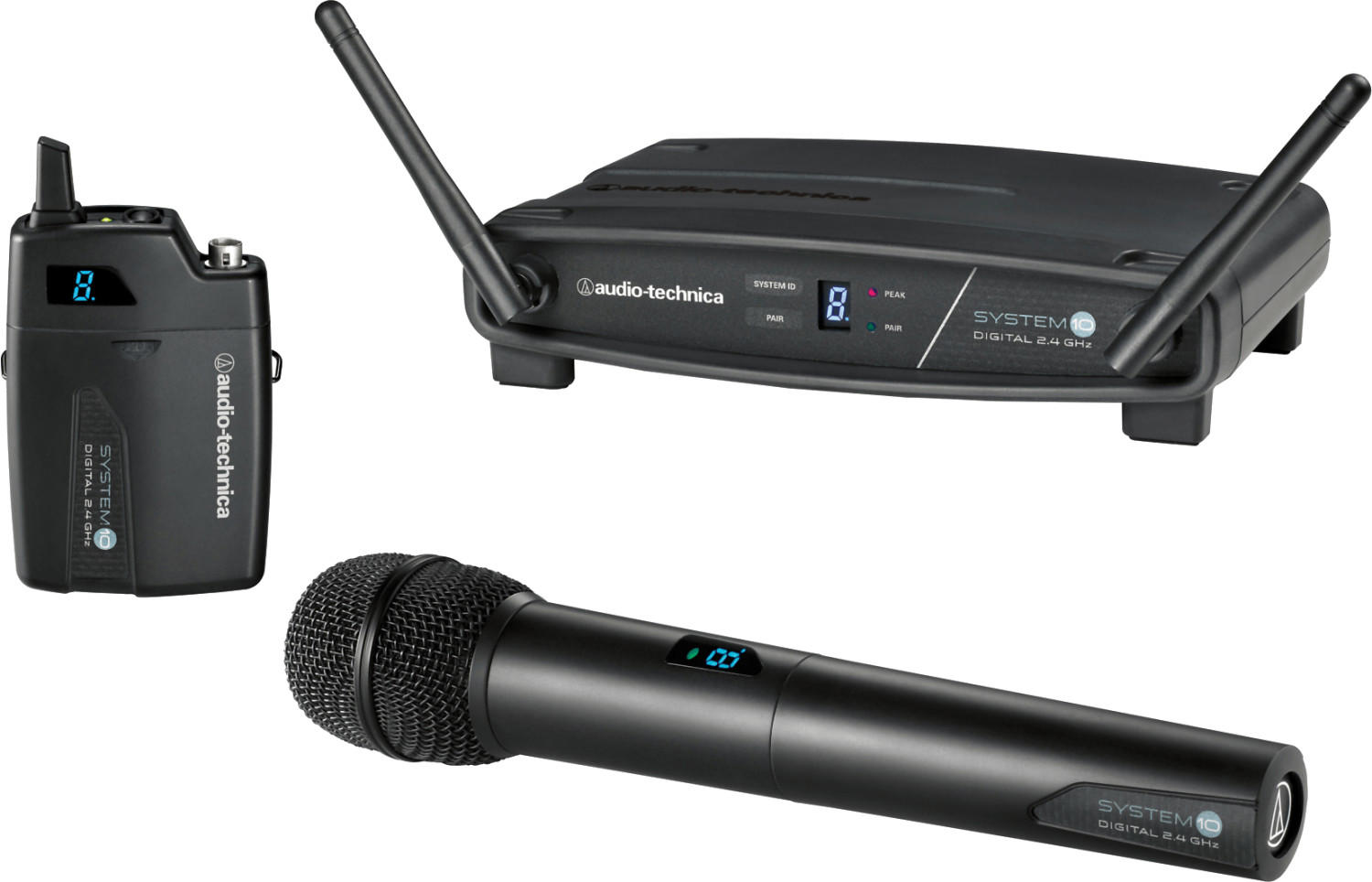
Frequency range
The frequency range of a wireless microphone is the range within which it can operate without interference or competition from other devices. It is important to choose a wireless microphone with a frequency range that is compatible with the frequency band available in your area to ensure optimal performance.
There are various options available in the market, each offering a different frequency range. For example, the Shure BLX24/PG58-H10 Wireless Vocal System operates within a frequency range of 542-572 MHz, making it ideal for live performances and events. Another option is the Sennheiser EW 135 G4-G Wireless Handheld Microphone System, which operates within a frequency range of 566-608 MHz, offering high-quality audio and reliable performance in various situations. Additionally, the Audio-Technica ATW-1101 System 10 Digital Wireless Handheld Microphone System operates within a frequency range of 2.4 GHz, providing interference-free operation and easy setup. Each of these options falls within a different frequency band, catering to different needs and ensuring compatibility with specific areas.
Signal stability
Signal stability refers to the ability of the microphone to maintain a strong and consistent signal without interference or dropouts. It is essential to invest in a wireless microphone system that offers superior signal stability to ensure uninterrupted audio performance.
One product that exemplifies excellent signal stability is the Shure SLX24/SM58 Wireless Microphone System. This system operates on the UHF frequency range (470-662 MHz) and features a patented Audio Reference Companding for high-quality, clear sound transmission. With a 24 MHz bandwidth, this system provides stable and dependable signal reception, making it ideal for professional performances and installations.
Another option worth considering is the Sennheiser EW 135-P G4 Wireless Handheld Microphone System. Equipped with Sennheiser's renowned True Diversity technology, this system ensures a solid reception and minimized dropouts. Its frequency range of 566-608 MHz offers a wide selection of frequencies for optimal signal stability, while the intuitive display and easy synchronization features make it user-friendly.
On a more budget-friendly scale, the Audio-Technica PRO 92cW-TH Wireless Headset Microphone System offers reliable signal stability. With a band C frequency range (541.500-566.375 MHz), this lightweight system is ideal for presentations, fitness classes, and theatrical performances. The microphone's condenser element provides clarity and high sensitivity, ensuring consistent signal strength during use.
Transmitter power
Transmitter power refers to the strength of the signal being transmitted from the microphone to the receiver. It plays a crucial role in the overall range and reliability of the wireless system. While there are variations in power levels across different models, a higher transmitter power generally allows for a greater range and improved signal stability. For example, the Sennheiser EW 135P G3 wireless microphone system offers a transmitter power of 30mW, ensuring a strong and stable signal transmission even in challenging environments. Additionally, the Shure BLX24/PG58 wireless system boasts a powerful transmitter that operates at a maximum of 10mW, providing consistent and interference-free audio performance across larger venues. It's essential to consider the transmitter power that meets your specific requirements to ensure a reliable wireless microphone setup.

Receiver sensitivity
Receiver sensitivity refers to the microphone's ability to capture weak or distant signals without resulting in signal loss or interference. A high receiver sensitivity ensures clearer and stronger audio transmission, even in challenging environments or larger venues. The Sennheiser EW 100 G4-835-S Wireless Handheld Microphone System is a notable option that boasts an excellent receiver sensitivity of -100 dBm, allowing it to capture signals precisely and deliver pristine sound quality. Another reliable choice is the Shure BLX288/PG58 Wireless Vocal Combo System, which has a receiver sensitivity of -102 dBm, ensuring optimal performance by picking up weak signals effectively. Both these products deliver exceptional receiver sensitivity, making them suitable for professional applications and venues that demand premium sound quality.
Operating range
Operating Range:
When choosing a wireless microphone, one of the crucial factors to consider is the operating range. This refers to the distance between the microphone transmitter and the receiver within which the microphone can effectively transmit the audio signal. A longer operating range allows for more freedom of movement, especially in larger venues or outdoor settings.
There are several leading products on the market that offer impressive operating ranges. In the mid-range segment, the Shure BLX288/PG58 Dual Wireless Microphone System stands out, boasting a range of up to 300 feet. This makes it suitable for various applications such as live performances, conference presentations, and public speaking engagements. Another exceptional choice is the Sennheiser EW 112P G4 Wireless Lavalier Microphone System, with an operating range of approximately 330 feet. This wireless system is particularly favored by video content creators, journalists, and lecturers who require hands-free mobility without sacrificing audio quality.
For more demanding environments, professional-grade wireless microphones like the Shure ULXD24/58 Handheld Wireless Microphone System offer an extended operating range of up to 300-400 feet. These systems are preferred by touring artists, concert halls, and broadcast studios, as they deliver reliable connectivity and high-quality sound even in challenging scenarios where interference can occur.
Channel availability
This refers to the number of frequencies or channels that your wireless microphone system can operate on. Having multiple available channels is crucial in order to avoid interference and ensure a clear and uninterrupted audio transmission.
For example, the Shure BLX288/PG58 Dual Channel Wireless System offers a wide frequency range of up to 524-865 MHz, allowing for up to 12 compatible systems per frequency band. With its two handheld microphones and a dual-channel receiver, this system is a great choice for duets or groups.
Another option is the Sennheiser EW 100-835S Wireless Vocal Microphone System. This system operates on a UHF frequency range of 516-865 MHz and features up to 1680 selectable frequencies, providing excellent flexibility in channel selection. Its wireless handheld microphone offers the reliability and clarity that Sennheiser is known for.
Channel selection capability
This refers to the number of channels available on the microphone system, allowing you to find and use a clear frequency without interference. The Shure BLX288/PG58 is a great example of a wireless microphone system with strong channel selection capability. It offers up to 12 compatible systems per frequency band and has a range of up to 300 feet. Another option is the Sennheiser EW 135P G4 wireless microphone system, which features auto frequency management and synchronization, ensuring interference-free transmission with up to 20 compatible channels per frequency bank.
In terms of market segmentation, wireless microphone systems can be categorized into different groups based on their channel selection capability. Entry-level systems, such as the Audio-Technica System 10 and the Samson Concert 88, offer a limited number of channels but are still suitable for small-scale applications. Mid-range systems, like the aforementioned Shure BLX288/PG58 and the AKG WMS40 Mini Dual Vocal Set, provide a more extensive range of channels to accommodate larger venues and performances. Professional-grade systems, including the Sennheiser EW 135P G4 and the Shure ULX-D Dual wireless microphone systems, excel in their advanced channel selection capabilities, making them ideal for high-demand professional events and productions.
Number of available channels
The number of channels determines how many different microphones can operate simultaneously without interference. This is particularly important in settings where multiple microphones are necessary, such as conferences, live performances, or interviews.
One example of a wireless microphone system with a substantial number of available channels is the Shure BLX288/SM58. This system offers up to 12 compatible systems, meaning you can use up to 12 microphones simultaneously without experiencing signal interference. Another option is the Sennheiser EW 135 G3, which provides 1,680 tunable UHF frequencies over 42 MHz to ensure interference-free operation. For larger events or more complex setups, the Shure ULXD14/85 system is worth considering, with its ability to support up to 60 compatible systems per band.


Diversity receiver
A diversity receiver uses two separate antennas to mitigate signal dropouts and maximize reception range. This technology is particularly useful in situations where interference or obstructions may be present. An example of a wireless microphone system with a diversity receiver is the Shure BLX24/SM58. This system offers professional-grade sound with up to 14 hours of continuous use and a range of 300 feet. Another option is the Sennheiser EW 135 G3, which provides exceptional audio quality with its diversity receiver and a range of up to 330 feet. Both of these systems are reliable and popular choices among professionals in the industry. Other wireless microphone systems with diversity receivers include the Audio-Technica ATW-1102 and the AKG Perception Wireless 45 Sports Set, providing different alternatives to suit various needs and budgets.



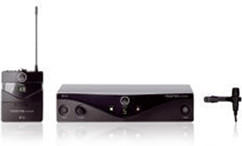
Antenna type
There are generally two types of antennas used: internal and external. Internal antennas are built into the microphone itself, providing a streamlined and compact design. These are great for handheld microphones like the Audio-Technica ATW-1102. On the other hand, external antennas, such as the ones found on bodypack transmitters like the Shure BLX14R/MX53, provide better signal range and reliability. They are ideal for applications that require freedom of movement, such as stage performances or presentations. Another category worth mentioning is the diversity antenna systems, like the Sennheiser EW 112P G4, which use two antennas simultaneously to minimize signal dropouts and improve wireless range. These can be particularly beneficial in larger venues or areas with potential signal interference.

Audio quality
First, the frequency response range is an important specification to consider. A wider frequency response range generally means that the microphone can capture a broader range of frequencies, resulting in a more accurate and natural sound reproduction. For example, the Shure SLX24/SM58 wireless microphone has a frequency response range of 50Hz to 15kHz, which allows it to capture the full spectrum of human voice.
Another important factor is the microphone's sensitivity or signal-to-noise ratio. A microphone with a high sensitivity can capture soft sounds accurately, while a low signal-to-noise ratio means that the microphone can pick up sound with less background noise interference. The Sennheiser EW 112P G4 wireless microphone has a sensitivity of 42dBV/Pa and a signal-to-noise ratio of 110dBA, making it an excellent choice for capturing clear and detailed audio.
Keep in mind that different microphone styles, such as handheld, lavalier, or headset, may have varying audio quality due to their design and intended use. Additionally, manufacturers like Audio-Technica and AKG offer a wide range of wireless microphones with different audio quality characteristics to cater to various needs and preferences.
Sound clarity
It refers to the ability of the microphone to capture and reproduce audio with precision and accuracy. Look for microphones that offer a wide frequency response range, typically from 20Hz to 20kHz, as this allows for the reproduction of a broad spectrum of frequencies. Clear and detailed sound can be achieved with microphones that have a high signal-to-noise ratio, like the Shure BLX24/SM58 wireless microphone system. This system combines the reliable performance of the Shure SM58 microphone with a rugged wireless receiver, providing crystal-clear vocal reproduction. Another example is the Sennheiser EW 500 G4 wireless microphone system, known for its outstanding sound quality and reliable wireless transmission. It features a high-definition audio bandwidth and an integrated receiver that ensures impeccable sound transmission.

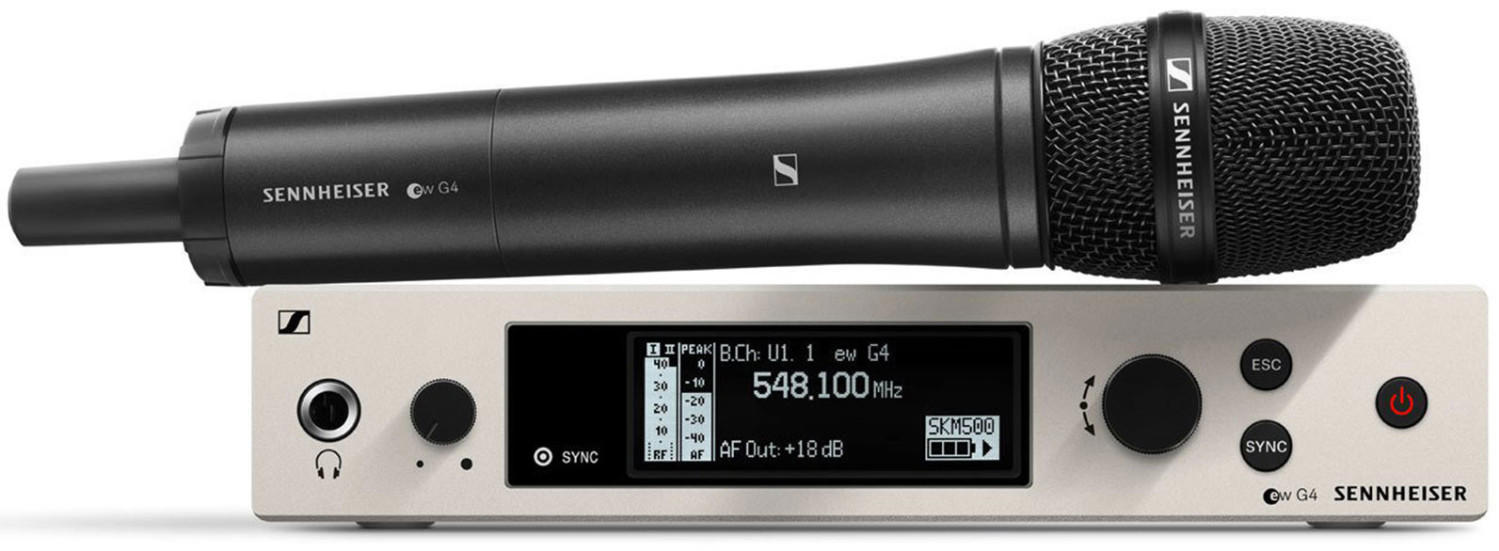

Background noise rejection
This feature allows the microphone to effectively block out unwanted background noise and transmit clear and crisp audio. One example of a wireless microphone renowned for its outstanding background noise rejection is the Shure SM58. This microphone utilizes a cardioid polar pattern that focuses the pickup pattern on the main sound source, reducing the pickup of surrounding noise. Another excellent option is the Sennheiser EW 135-P G4. This microphone features a supercardioid pickup pattern, which provides even stronger background noise cancellation than a cardioid pattern. Additionally, the AKG D5 offers excellent background noise rejection thanks to its patented Laminate Varimotion diaphragm technology that filters out unwanted noise.
Microphone type (handheld, lavalier, headset)
There are three main types to choose from: handheld, lavalier, and headset.
Handheld microphones are the most common type and are often used in live performances and presentations. They are easy to hold and control, making them a popular choice for singers and speakers. One example of a high-quality handheld microphone is the Shure BLX24/PG58 Wireless Handheld Microphone, which features a cardioid pickup pattern and a frequency response range of 50 Hz to 15 kHz.
Lavalier microphones, also known as lapel or clip-on microphones, are small and discreet. They are often used by television presenters, public speakers, and performers who need their hands free. A noteworthy option is the Sennheiser EW 112P G4-G Portable Lavalier Wireless System, which includes an omnidirectional lavalier microphone and offers a frequency response range of 40 Hz to 18 kHz.
Headset microphones are similar to lavalier microphones but incorporate a small microphone capsule that is worn on the performer's head. They are commonly used in fitness classes, theatrical productions, and sports events. One compelling choice is the Audio-Technica System 10 ATW-1101/H92TH-TH Headset Wireless System, which features an adjustable headset for a comfortable fit and a frequency response range of 20 Hz to 20 kHz.
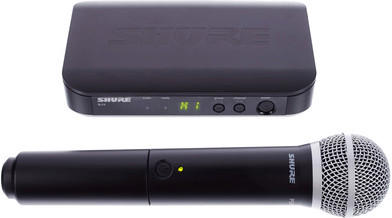

Each microphone type serves different purposes, so it's important to choose based on your specific needs and application.
Microphone sensitivity
Microphone sensitivity refers to how well the microphone is able to pick up and amplify sound. Higher sensitivity microphones are ideal for environments with low sound levels, as they can capture even the faintest of sounds. On the other hand, lower sensitivity microphones are suitable for environments with louder sound levels as they can handle high sound pressure without distorting the audio.
There are different types of wireless microphones available in the market that cater to various sensitivity requirements. For instance, the Shure SM58 is a popular choice among musicians and entertainers with its high sensitivity (dBV/PA: -54.5) that captures detailed vocals and instruments even in noisy environments. Alternatively, for larger venues and professional audio production, the Sennheiser e945 offers a slightly lower sensitivity (dBV/PA: -51) for improved rejection of feedback and optimal performance. Additionally, budget-friendly options like the Audio-Technica AT2020 Wireless have excellent sensitivity (dBV/PA: -37) for personal use and casual recording sessions. The sensitivity of the microphone is crucial in ensuring clear and accurate sound reproduction, making it an essential factor to consider when making your wireless microphone purchase.

Microphone pickup pattern
The pickup pattern determines the direction and scope from which the microphone can capture sound. There are several common pickup patterns to choose from:
Cardioid: This pickup pattern captures sound from the front of the microphone while reducing noise from the sides and rear. The Audio-Technica AT2020 Cardioid Condenser Studio Microphone is a popular choice for podcasting and studio recordings.
Omnidirectional: An omnidirectional microphone captures sound from all directions equally. This is ideal for capturing ambient sound or in situations where multiple sound sources need to be recorded simultaneously. The Shure MV88+ Video Kit offers an omnidirectional microphone option for video recording.
Bidirectional: As the name suggests, a bidirectional microphone captures sound equally from the front and back while minimizing side noise. This pattern is commonly used for interviews or recording two people facing each other. The Rode NT-USB Mini USB Microphone features a bidirectional mode for added versatility.
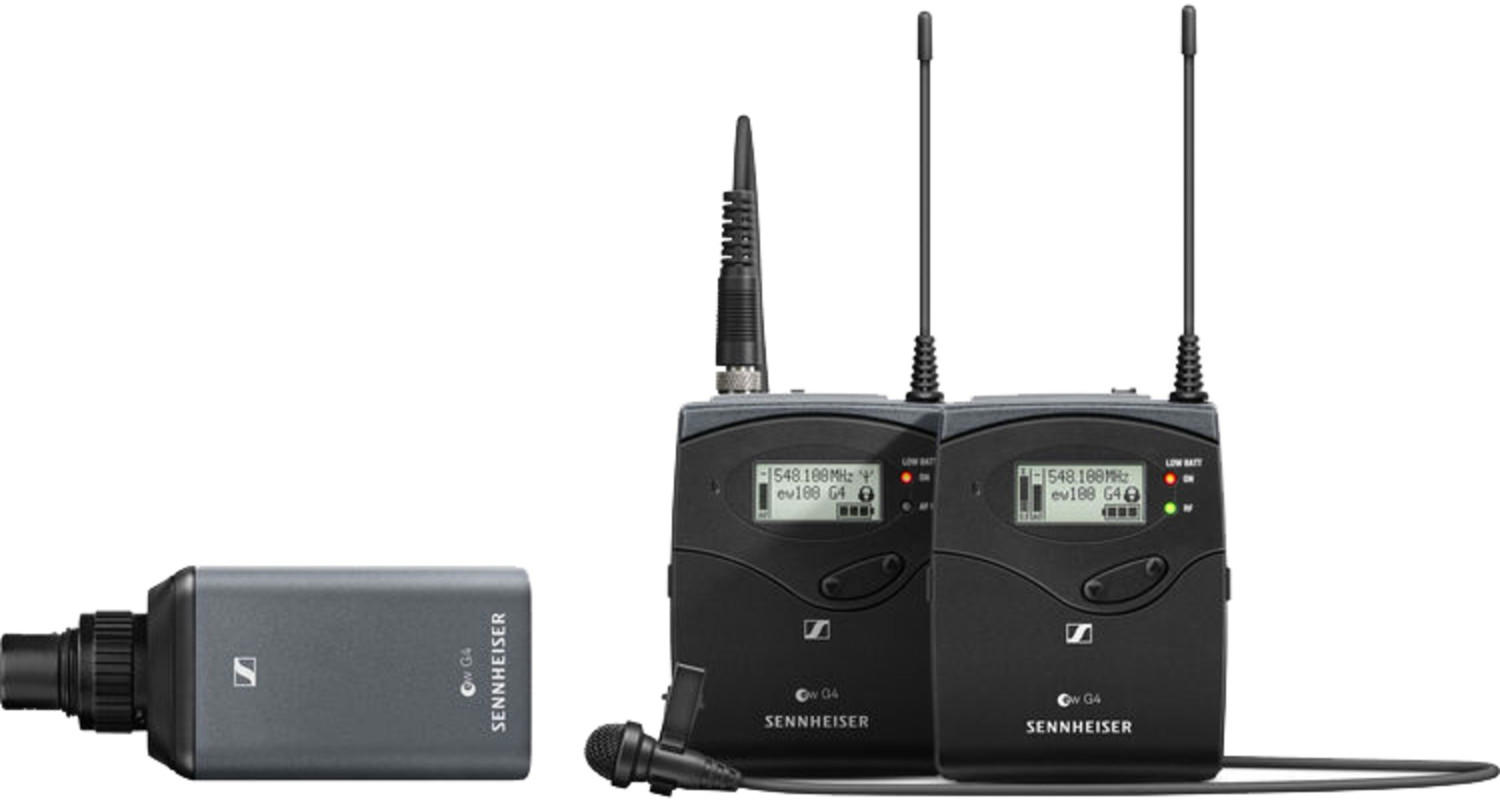
It's important to choose the pickup pattern that best suits your specific recording needs to ensure clear and accurate sound reproduction. Additionally, be sure to check the frequency response range and signal-to-noise ratio of the wireless microphone, as these factors also contribute to its overall performance.
Battery life
Longer battery life ensures seamless performance without interruptions during presentations, live performances, or video recordings. Ideally, look for wireless microphones that offer extended battery life, such as the Sennheiser EW 100 G4 series, which boasts a battery life of up to 8 hours. Another option is the Shure SLX Wireless System, known for its impressive 12-hour battery life. For those seeking an even longer battery life, the Audio-Technica System 10 provides up to 20 hours of continuous use on a single charge. These wireless microphone options cater to different needs and usage scenarios while maintaining stability and exceptional audio quality.
Battery type
The battery type affects the overall performance and convenience of your microphone. One commonly used battery type is the AA batteries, which are inexpensive and easy to find. Wireless microphones that use AA batteries often offer a longer run time and can be a great choice for those who require extended use. A good example of a wireless microphone that uses AA batteries is the 'Shure BLX24/PG58-H10 Handheld Wireless System'. It features an integrated PG58 cardioid microphone capsule and operates on two AA batteries, providing up to 14 hours of continuous use. For those who prefer rechargeable batteries, the 'Sennheiser XSW-D Vocal Set Digital Wireless Microphone System' is worth considering. It uses rechargeable lithium-ion batteries that can be easily charged via USB, offering a convenient option for long-term use.
Battery status indicator
This feature is essential as it allows performers or presenters to monitor the battery life of their wireless microphone. The battery status indicator ensures that the microphone does not die in the middle of a performance or presentation, providing a hassle-free experience.
There are several wireless microphone systems on the market that excel in their battery status indicator feature. One exceptional option is the Shure BLX24R/SM58 Wireless Microphone System. This system includes an integrated battery status indicator that displays the remaining battery life of both the microphone and the receiver. Additionally, it uses an LED indicator with green, amber, and red colors to provide a quick visual indication of the battery status.

Another reliable choice is the Sennheiser EW 135P G4 Handheld Wireless Microphone System. This system incorporates a battery status indicator on both the microphone transmitter and the receiver unit. The display shows the current battery status in hours and minutes, eliminating any guesswork about the remaining battery life. The Sennheiser EW 135P G4 is known for its long battery life and excellent audio quality, making it an ideal option for professional performers and speakers.
Charging options
Some wireless microphones come with integrated rechargeable batteries, while others require separate batteries. The Shure BLX288/PG58 Dual Channel Handheld Wireless System is an example of a wireless microphone that uses integrated rechargeable batteries, specifically lithium-ion batteries. These batteries provide a longer lifespan and are easily recharged using the included charging cable. On the other hand, if you prefer the convenience of replaceable batteries, the Sennheiser EW 112P G4 Camera-Mount Wireless Microphone System is an excellent choice. It uses two AA batteries and provides up to 8 hours of operation. This option allows you to easily swap out batteries when necessary, perfect for long events or situations where you may not have immediate access to charging.
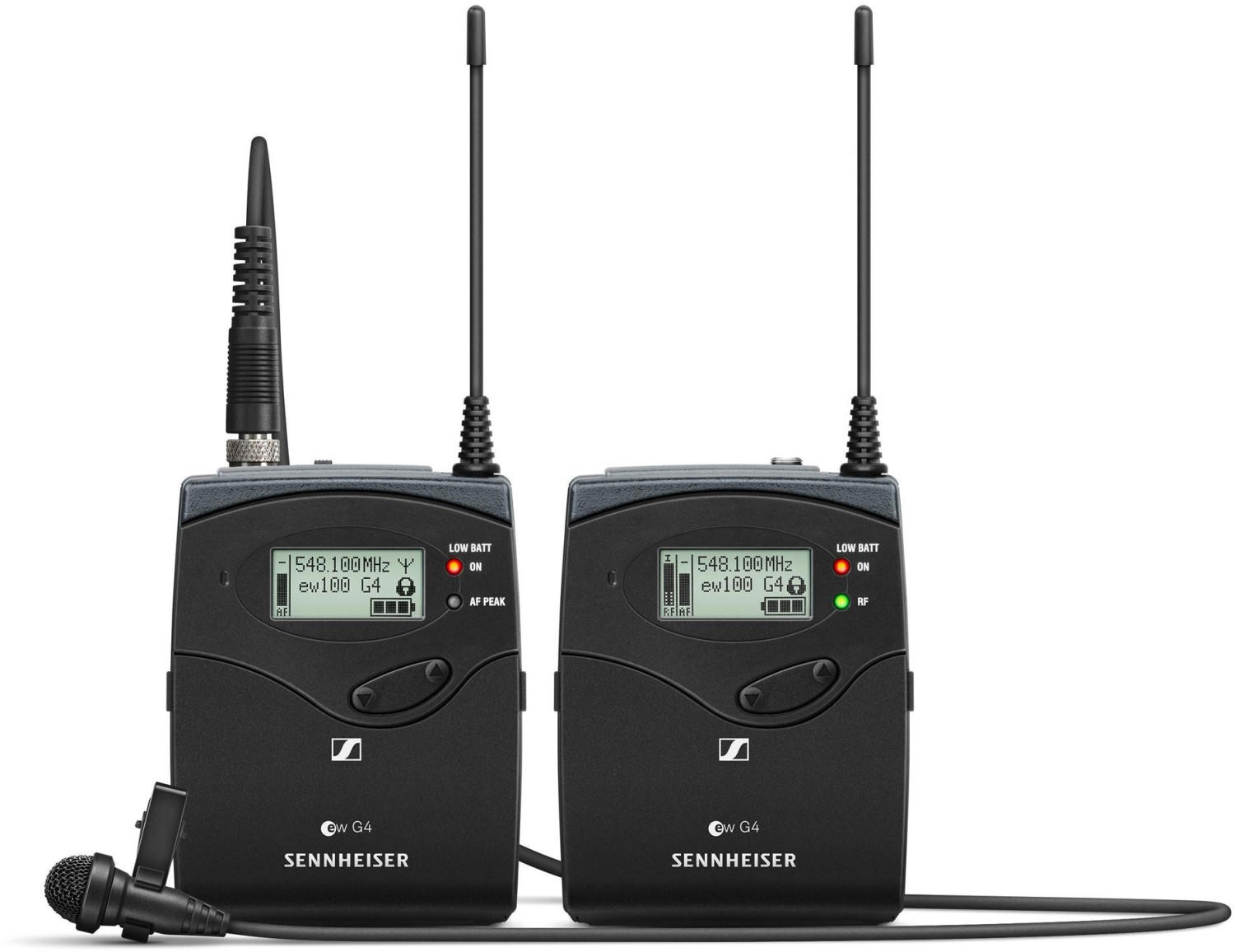
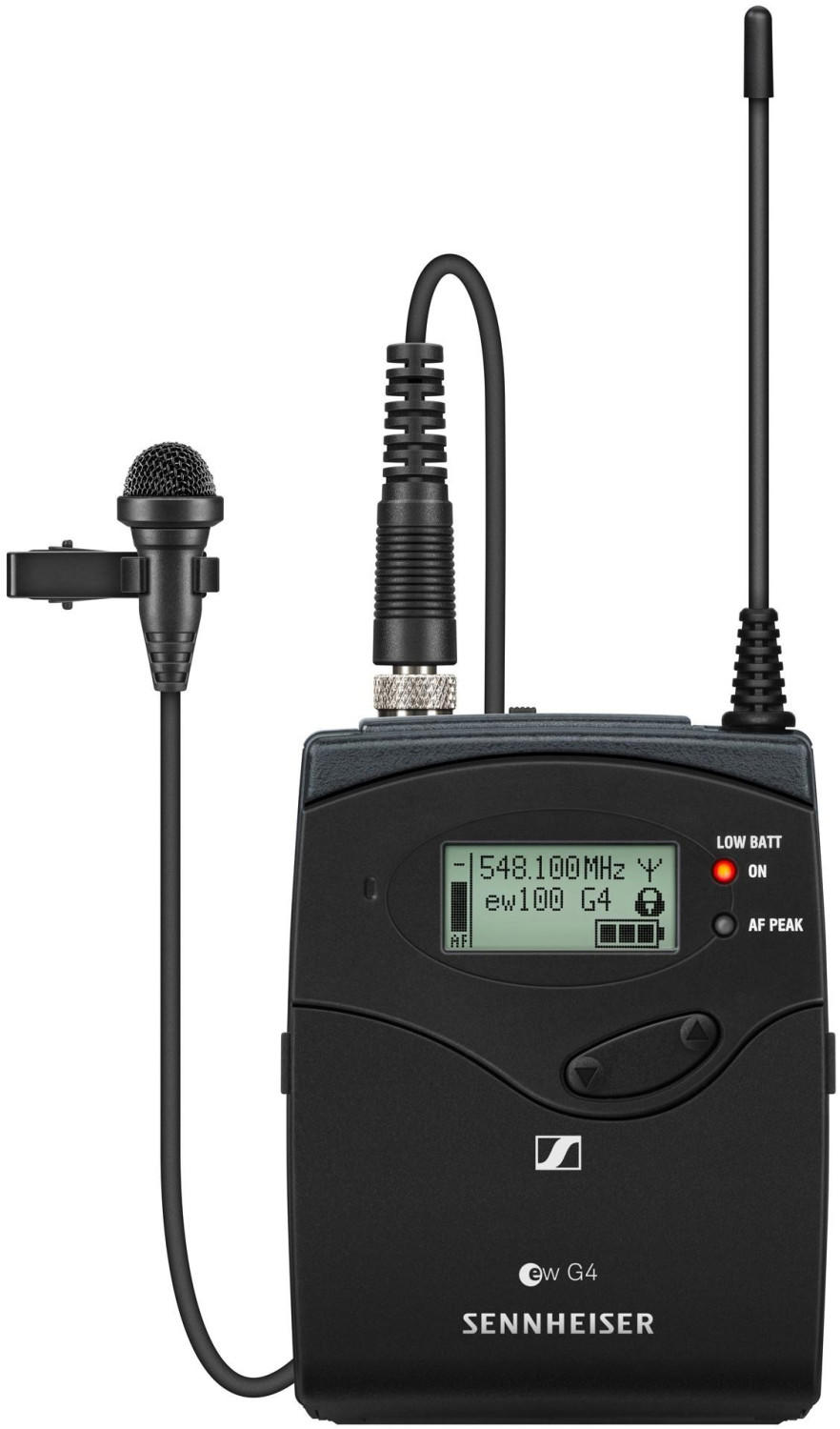
Auto frequency scan
This feature ensures that your microphone is set to an optimal and clear frequency, minimizing the risk of interference from other devices. Some excellent choices that offer an auto frequency scan include the Shure BLX288/PG58 Dual Channel Wireless System and the Audio-Technica ATW-1102 System 10 Digital Wireless Handheld Microphone System. These systems have the ability to automatically scan and select the best frequency for reliable and high-quality audio transmission. The Shure BLX288/PG58 system operates in the UHF frequency range, providing a clear and interference-free signal, while the Audio-Technica ATW-1102 system utilizes 2.4 GHz frequency band, ensuring a stable and secure connection.
True diversity reception
This technology ensures a stable and reliable wireless signal by using dual receivers and antennas. It prevents signal dropouts and interference that can occur in congested environments. The Sennheiser EW 500 G4-965 is an excellent example of a wireless microphone system with true diversity reception. It operates in a frequency range of 558 to 626 MHz and offers up to 50mW of transmission power. Another great option is the Shure BLX288/PG58, which operates in the H9 frequency band and features two PG58 handheld transmitters with integrated cardioid microphones. These systems are ideal for live performances, conferences, and other events where a reliable wireless microphone is essential.


Latency
Lower latency is crucial for live performances, as it ensures that the sound reaches the audience without noticeable delay. For example, the Shure GLXD24/SM58 digital wireless microphone system features an industry-leading 4ms latency, providing virtually no perceptible delay. Similarly, the Sennheiser EW 500 G4 wireless microphone system boasts a latency of less than 3ms, ensuring minimal delay for an uninterrupted performance. Both options offer exceptional audio quality and clear voice reproduction without compromising on speed.


Display screen
A clear and easy-to-read display screen allows the user to easily monitor the microphone's settings and battery life during performances or presentations. One example of a wireless microphone with a high-quality display screen is the Shure BLX24/PG58. This microphone features an LCD screen that provides clear information on the battery status and frequency settings, ensuring accurate monitoring during usage. Another option is the Sennheiser EW 135 G3, which also includes an easy-to-read OLED display screen, allowing users to easily navigate through menu options and quickly adjust necessary settings. Both of these microphones offer reliable performance and enhanced user experience with their informative display screens.

Compatibility with other devices
Ensure that the wireless microphone you choose is compatible with devices such as cameras, mixers, amplifiers, and sound systems to ensure seamless integration and functionality. For example, the Sennheiser EW 112P G4 wireless microphone system is compatible with a wide range of devices due to its versatile receiver and transmitter units. It operates in the frequency range of 516 to 558 MHz and features 1680 tunable UHF frequencies, allowing for interference-free transmission. Another option is the Audio-Technica ATW-1102 wireless microphone system, which operates in the 2.4 GHz range and includes a receiver and handheld transmitter that are compatible with a variety of audio devices. These options offer high compatibility with multiple devices in different frequency ranges, ensuring hassle-free use in various setups.

Ease of setup
Look for a system that offers simple and hassle-free installation. One great example is the Shure BLX24/PG58 Wireless Microphone System. It features a quick and easy setup with one-touch frequency selection and automatic transmitter setup. This means you can start using it right out of the box, without any complicated configuration. Similarly, the Sennheiser XSW 2-ME2 Wireless Lavalier Microphone System is known for its user-friendly setup. It offers a synchronization feature that automatically links the transmitter and receiver, simplifying the process even further. With these systems, you can set up your wireless microphone effortlessly, allowing you to focus on your performance rather than spending time on technical setup.
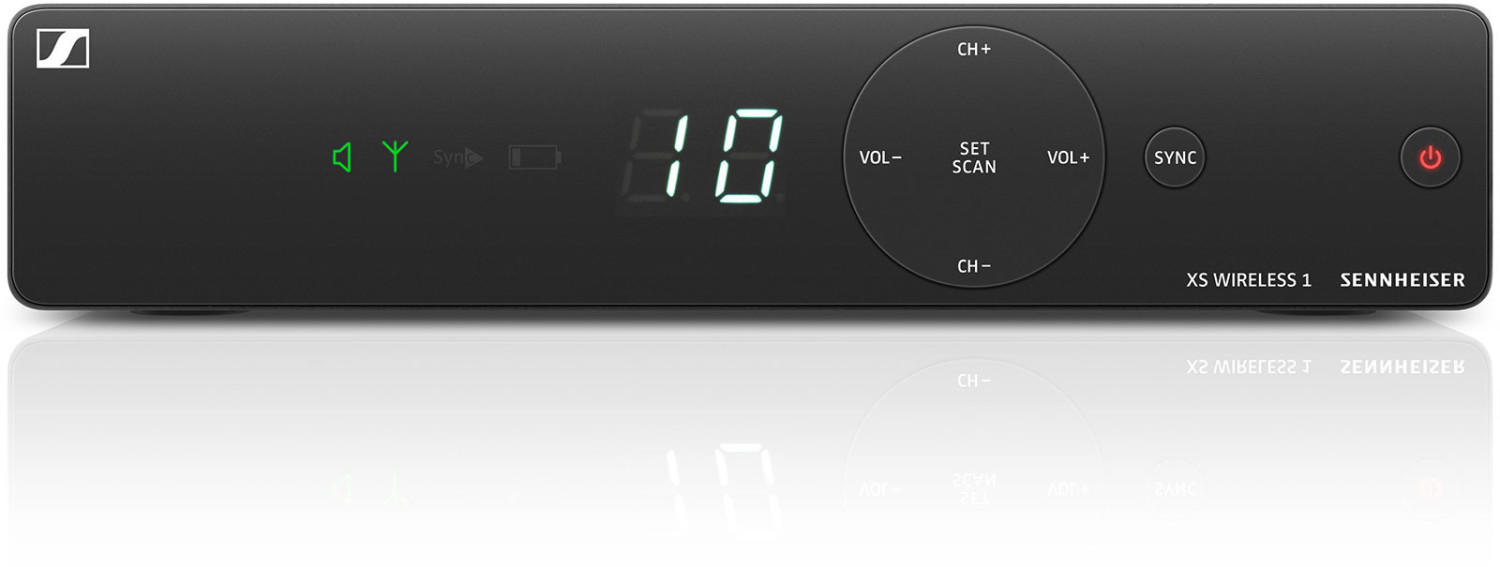
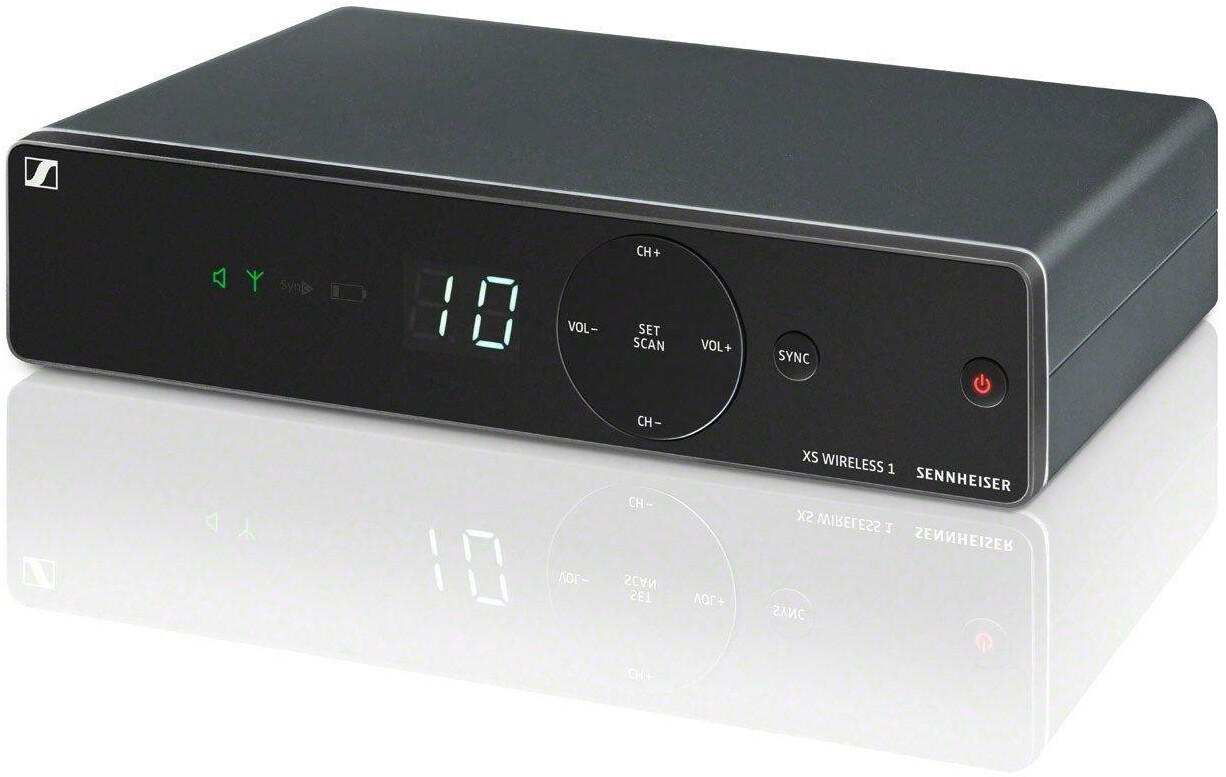
Durability
You want a microphone that can withstand rigorous use and last for a long time. One excellent option to consider is the Shure SM58 Wireless Handheld Microphone. Built with a legendary construction, the SM58 offers a rugged and durable design that can withstand any demanding conditions. Its hardened steel mesh grille protects the microphone element from damage, making it ideal for intensive onstage use. Another remarkable choice is the Sennheiser EW 135 G4 Wireless Handheld Microphone System. This system features a sturdy metal housing that ensures long-term durability, perfect for professionals who demand robust quality from their equipment.

Portability
Some users require a microphone that is lightweight and easy to carry around, making it suitable for on-the-go or outdoor activities. A great example of a portable wireless microphone is the Shure BLX14/SM31-H9 Bluetooth Headset Wireless System. This system features a lightweight and comfortable headset microphone, perfect for performers who need freedom of movement. Another option to consider is the Sennheiser XSW-D Portable Lavalier Set. This wireless system includes a compact and discreet lavalier microphone, designed for hassle-free and effortless portability. Both of these products offer reliable wireless connectivity and exceptional sound quality, making them ideal choices for those seeking a portable wireless microphone solution.
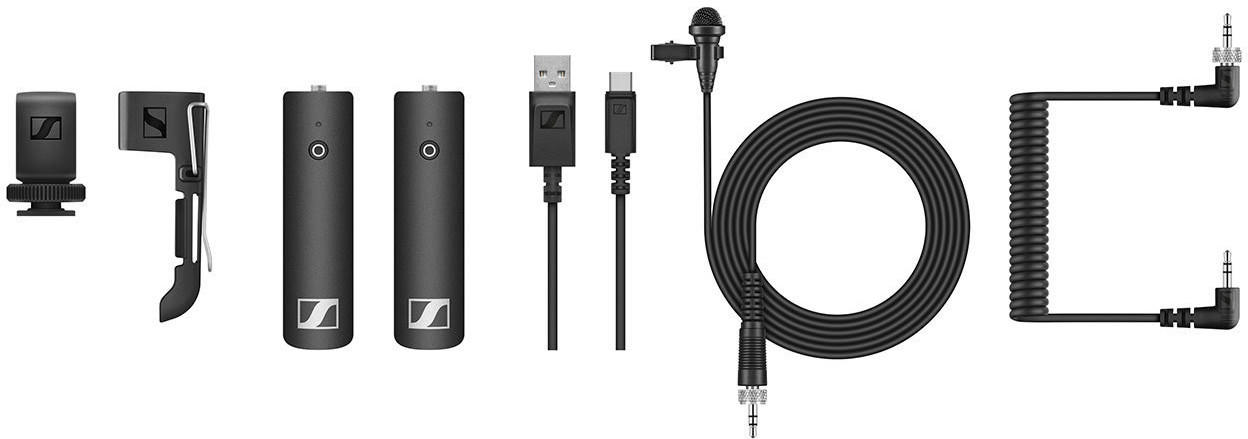

Weight
A lightweight microphone will provide greater comfort and reduce fatigue during performances or presentations. When comparing options, look for products that have the lowest weight possible without compromising on other specifications. For example, the Shure SLX2/SM58 weighs just 10.2 ounces, making it a great choice for those who need a lightweight wireless microphone without sacrificing audio quality. Another option is the Sennheiser EW 100-935 G3, which weighs only 294 grams, ensuring ease of use even during lengthy gigs. Evaluating the weight of wireless microphones can allow you to find the perfect balance between convenience and performance.

Price
There are a wide range of options available on the market, with prices varying based on factors such as brand, features, and quality. It is essential to determine your budget and understand the level of performance you require from a wireless microphone. For those on a tight budget, the Audio-Technica ATW-1102 presents a cost-effective option with its affordable price and reliable performance. If you are seeking a mid-range option, the Shure BLX24/PG58 offers excellent sound quality and durability at a reasonable price. On the higher end of the price spectrum, the Sennheiser EW 135P G4 provides professional-grade audio and advanced features suited for more demanding applications. Ultimately, the price of a wireless microphone should align with your specific needs and budget constraints.

Variety of brands
Each brand comes with its own set of pros and cons, allowing you to find a microphone that best fits your needs. For example, Shure is a well-established brand known for its high-quality and reliable wireless microphones. They offer a range of options including the Shure SLX24/SM58, which is known for its exceptional sound quality and robust build. On the other hand, Sennheiser is a brand that focuses on innovation and cutting-edge technology. Their Sennheiser EW100 G4 series features advanced features such as frequency agility and integrated network audio.
Another segment of wireless microphones in the market includes budget-friendly options without compromising on quality. One popular brand in this segment is Audio-Technica with their Audio-Technica ATW-1102 providing a cost-effective solution with strong RF performance and clear sound reproduction. Additionally, there are specialty brands like RODE that cater specifically to certain types of users, like filmmakers. Their RODE Wireless Go system is compact and allows for hassle-free audio capture during video shoots.
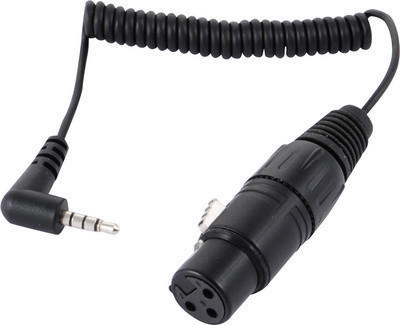


Ultimately, the choice of brand comes down to personal preference, budget, and the specific requirements of your use case.